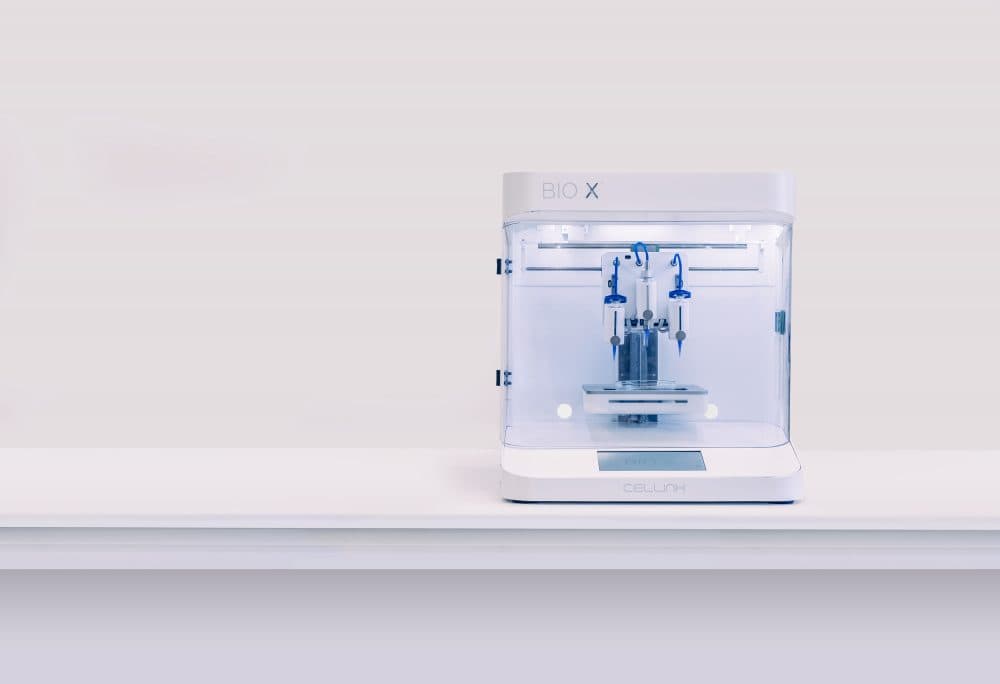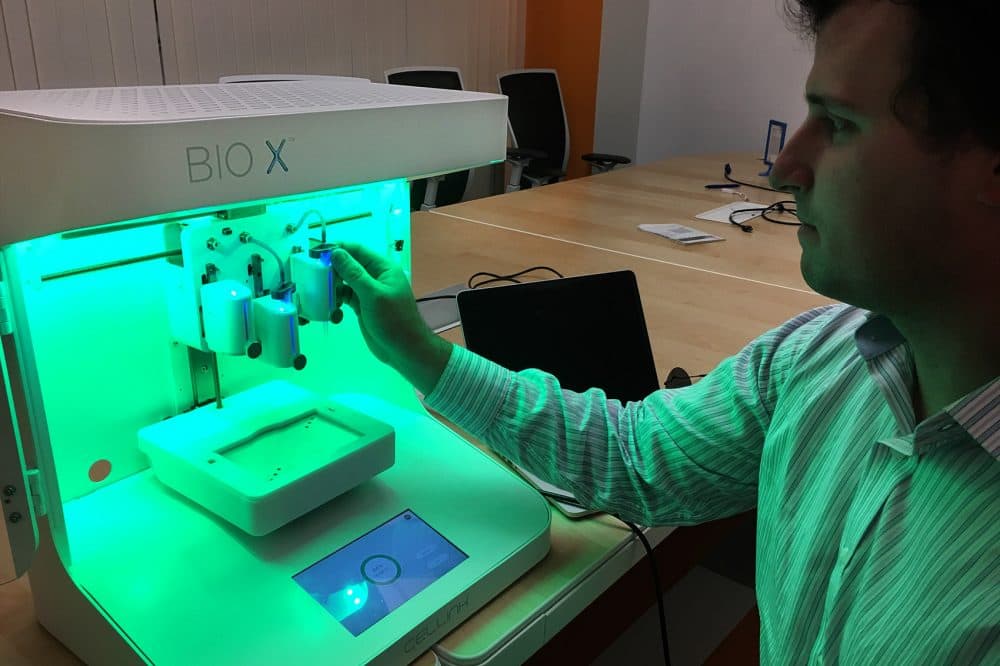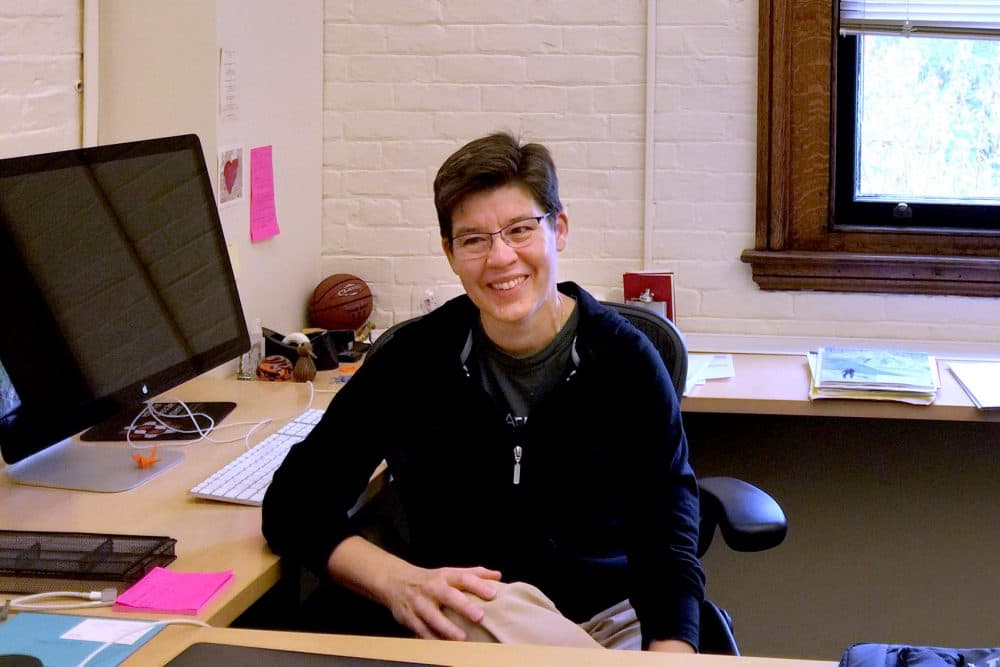Advertisement
How 3D Bioprinting Could Revolutionize Organ Replacement

A new printing technology called 3D bioprinting promises to revolutionize virtually every aspect of modern life and, perhaps, even transform life itself.
3D printing -- sometimes called "additive manufacturing" — has been around for more than 30 years. But now, with the development of new printable plastics, glass and metals, it's possible to build increasingly more complex parts and products, layer by layer.
At CELLINK, staff are developing 3D bioinks that contain human cells. The ultimate mission: to manufacture human organs. More than 100,000 people in the United States need an organ replacement, but there is a critical shortage.
The Swedish startup recently opened its U.S. headquarters in Cambridge, near MIT.
Its bioink chief, Patrick Thayer, demonstrates the BIO X 3D printer and living inks.
Need a new part for an ear or nose? CELLINK is working on it, says Thayer. "If you want a complex heart valve, you can put that together. It's cool. The future is here."

The BIO X 3D printer looks like a white plastic kitchen coffeemaker, maybe a bit larger. But it’s not brewing cups of joe -- but potentially parts of Joe. Where the pot would go in a coffeemaker is a petri dish. Hovering above, guided by software, a narrow nozzle lays down thin layers of bioinks.
Once printed, the living inks take on intricate forms using data derived from MRI machines. When finished, the printer glows green, casting an eerie light on Thayer.
"These are the different layers," Thayer explains. "So this is the print pattern."
CEO Erik Gatenholm, a 27-year-old entrepreneur who co-founded the startup two years ago, says his company is in a "super exciting spot." CELLINK is already doing business in 40 countries and is looking to expand rapidly. It is hiring experts in biomaterials, chemistry, cell biology, software and robotic engineering.
Advertisement
Gatenholm says that is why CELLINK opened in Kendall Square. "Cambridge is the hotspot of biomaterials, biology, technology research. It's the place you got to be."
CELLINK makes and sells its own models of 3D printers, but Gatenholm says the market and the big money are in the bioinks.
Before, CELLINK scientists had to prepare their own living inks.
"What we saw as being novel as a company was that all these researchers were using the printers but none of them had the ink, and the ink was, you know, the ink is everything," Gatenholm says. "Imagine a paper printer with no ink."
Gatenholm first leased, then purchased, a patent for a unique ink containing human cells. "What was so special about [the material] is that it allowed human cells to thrive and live in it, and start producing tissue," he says.
CELLINK now produces 15 different biologically active inks to make cells and tissues. They range in price from $9 to $300, depending on how they function in the body.
"For instance," Gatenholm says, "a bone ink has a different composition and behaves differently because the bone cells need to thrive in that environment, versus, for instance, an ink for the heart because the heart tissue needs softer and needs to be somewhat elastic."

If there is a secret ingredient to the living inks, it's the materials that keep the cells from just being a gooey glob after they are printed.
"So the average person should just think about Jell-O," laughs Harvard professor Jennifer Lewis, a pioneer in 3D bioprinting. A chemist by training, Lewis' official title is professor of biologically inspired engineering.
Turns out one of the critical ingredients in making living inks useful in the printing process has the consistency of Jell-O. These so-called hydrogels are made from cellulose from trees and algae from the sea. Combined with the inks, the Jell-O-like material provides the scaffold that give cells their shape, says Lewis.
"And that kind of consistency is similar to what you might find in the body," she says. "So if we're going to do what we call bioprinting, we want to have not only that scaffold but we want the cells plus the vasculature to really create a human tissue."
Lewis and her lab team pioneered a bioprinting process breakthrough: a way of printing hollow pathways in printed tissues. The network of channels for the veins and capillaries provides a way to deliver nutrient-rich blood to cells.
The development has created a new tool for biomedical researchers. CELLINK's Gatenholm says scientists are now able to build functioning human tissues.
"Let's say for example liver tissue," he says. "They can use our technology to print livers and then pharmaceutical companies or other researchers can test different new drugs on these livers or they can test different chemicals in these livers and see how they react."
Instead of testing new drugs on lab animals or in test tubes, researchers will be able to use printed human tissues to determine safety and efficacy.
Lewis believes the technology can one day create customized medical treatments.
"Ultimately the goal would be to take patient-specific cancer cells and then use that as the platform on which to screen the drugs to find out, what is the optimal cocktail to give a patient if they have a certain type of cancer? And you can do that before you actually try these drugs on the patient. So it could be very powerful."
The first commercial application of 3D tissue printing will probably be skin tissue that can be used to test cosmetics. And with a mobile 3D printer, medics on the battlefield could use the technology to heal wounds.
3D bioprinting is rapidly evolving into new therapies and diagnostics. The fledgling business promises to become a worldwide industry.
Lewis is optimistic but cautious.
"There are still many many hurdles to be crossed before this becomes a technology that's going to impact humans in therapeutic applications," she says. "But we're working hard to do that. And there's exciting breakthroughs on the horizon."
Gatenholm has his eye on that horizon, and beyond. "There [is] so much we can do with different biomaterials. The potential is unlimited. We're aiming for the stars."
Gatenholm predicts one day, perhaps in 15 or 20 years, 3D bioprinters could manufacture custom-made kidneys, lungs and hearts for the tens of thousands of people in need of an organ transplant.
This segment aired on November 22, 2017.
